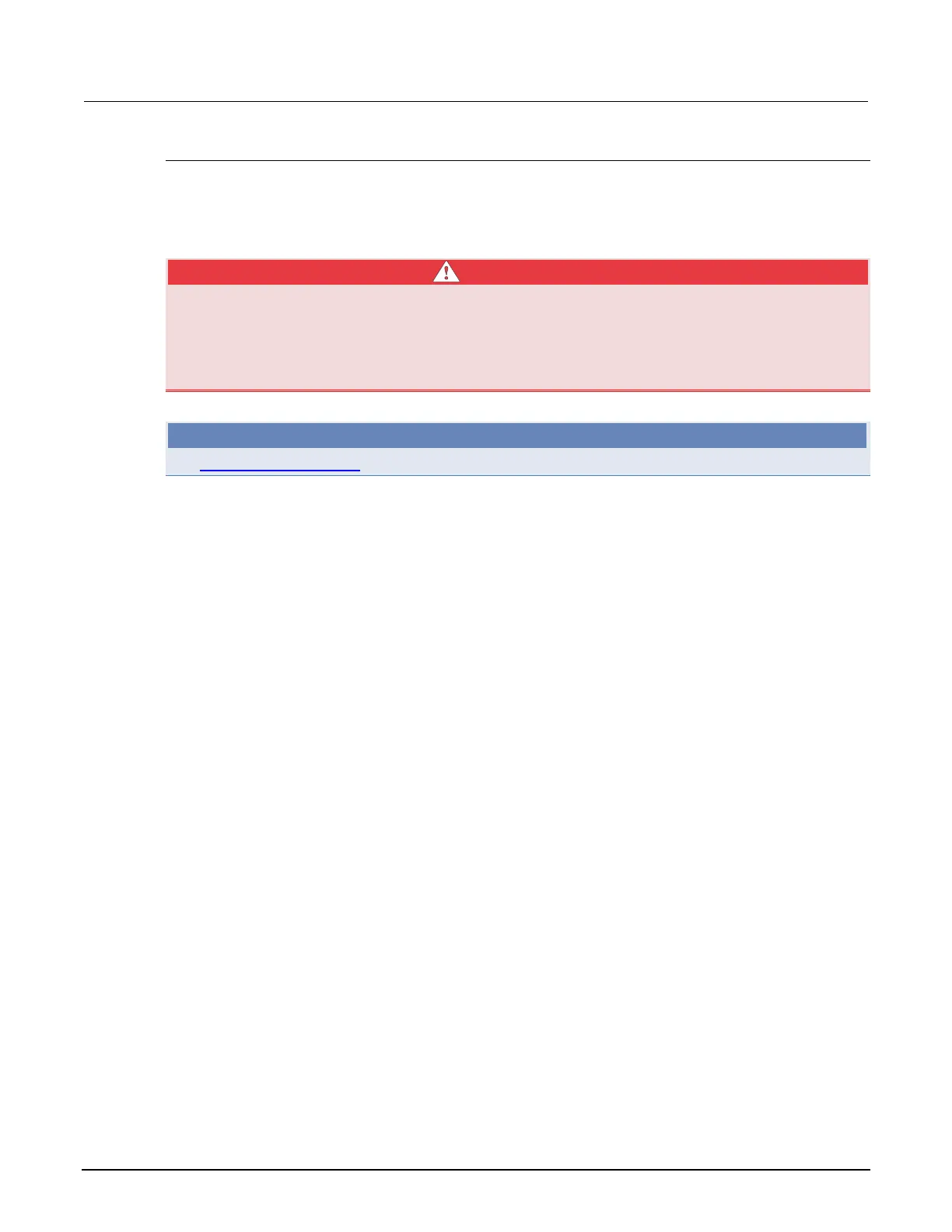Section 4: Theory of operation Model 2651A High Power System SourceMeter® Instrument Reference Manual
4-18 2651A-901-01 Rev. A / March 2011
Guard connections
Guard is typically used to drive the guard shields of cables and test fixtures. Guard is extended to a
test fixture from the cable guard shield. Inside the test fixture, the guard can be connected to a guard
plate or shield that surrounds the device under test (DUT).
WARNING
To prevent injury or death, a safety shield must be used to prevent physical contact with a
guard plate or guard shield that is at a hazardous potential (>30 V RMS or 42.4 V peak). This
safety shield must completely enclose the guard plate or shield and must be connected to
safety earth ground. The figure in this topic shows the metal case of a test fixture being used
as a safety shield.
NOTE
See Guarding and shielding (on page 2-53) for details about guarded test connections.
Inside the test fixture, a triaxial cable can be used to extend guard to the device under test (DUT).
The center conductor of the cable is used for input/out HI, and the inner shield is used for guard. The
outer shield, which is connected to the safety earth ground through the safety shield, is used for
input/output LO.
A coaxial cable can be used if the guard potential does not exceed 30 V RMS (42.4 V peak). The
center conductor is used for input/output HI, and the outer shield is used for guard. For higher guard
potentials, use a triaxial cable.
The figure below shows how cable guard can eliminate leakage current through the insulators in a
test fixture. In this figure, leakage current (I
L
) flows through the insulators (R
L1
and R
L2
) to In/Out LO,
adversely affecting the low-current (or high-resistance) measurement of the DUT.
Also in the figure below, the driven guard is connected to the cable shield and extended to the metal
guard plate for the insulators. Since the voltage on either end of R
L1
is the same (0V drop), no current
can flow through the leakage resistance path. Thus, the SourceMeter instrument only measures the
current through the DUT.

